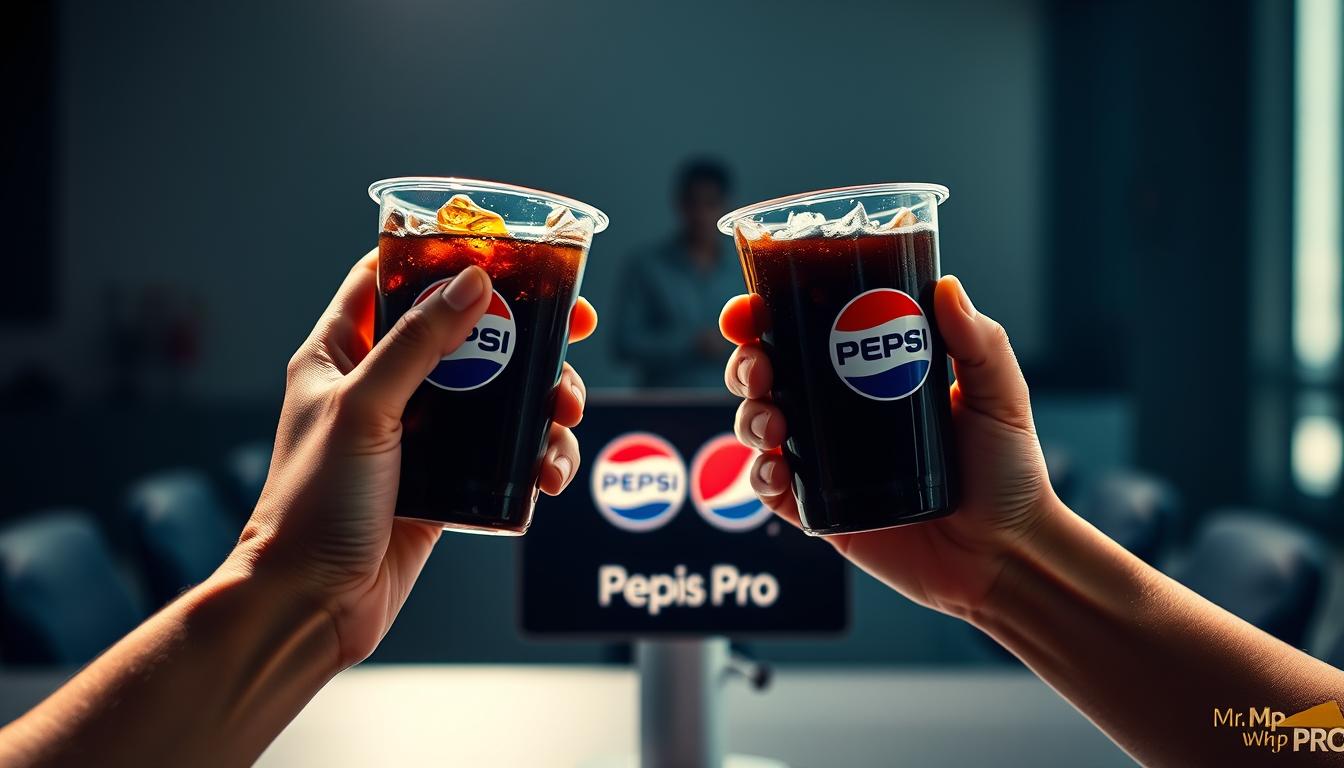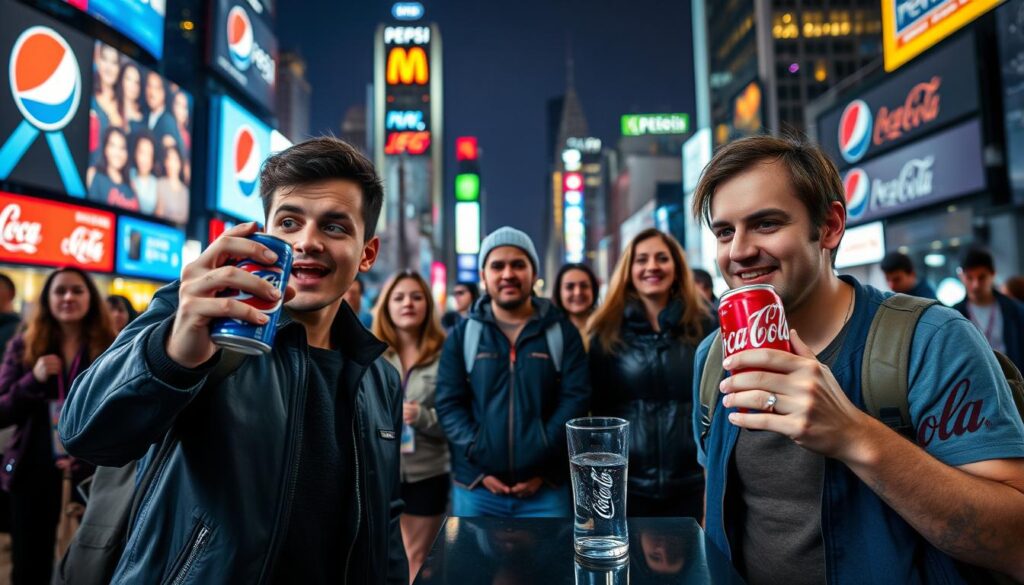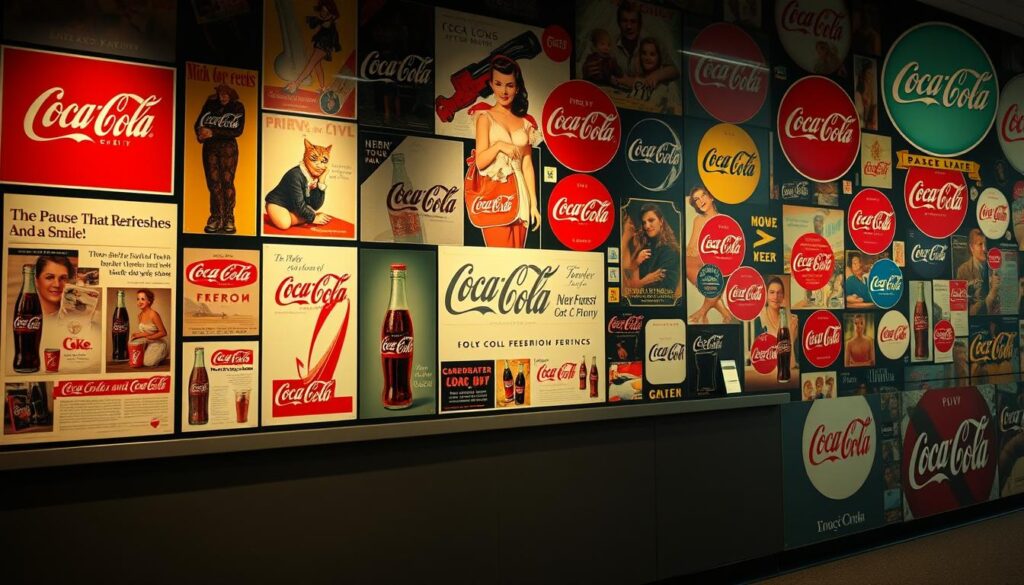
Did you know that over 50% of participants in blind taste tests prefer Pepsi over other sodas? This surprising statistic highlights the impact of the Pepsi Challenge, a groundbreaking marketing strategy that reshaped consumer preferences in the soda industry.
In 1975, Pepsi dared to challenge the status quo with its now-famous blind taste tests. Conducted in malls and grocery stores across America, these tests invited consumers to compare Pepsi with its main competitor without knowing which was which. The results were astonishing: a majority of people chose Pepsi, proving that taste can be a powerful differentiator in the competitive world of soda brands.
This innovative approach not only positioned Pepsi as a bold challenger but also laid the groundwork for modern guerrilla marketing techniques. By focusing on direct consumer engagement, Pepsi created a nationwide conversation that went beyond traditional advertising. The campaign’s success was further amplified by its ability to target younger audiences, contrasting with the more traditional image of its competitors.
Today, the Pepsi Challenge remains a landmark example of how innovative marketing can influence consumer behavior. While this article focuses on Pepsi’s strategy, similar tactics have been successfully applied in other industries, such as social media platforms like Myspace and Facebook. The lessons learned from this campaign continue to inspire brands aiming to stand out in a crowded market.
As you explore the story of the Pepsi Challenge, you’ll discover how this simple yet effective strategy not only changed the soda industry but also paved the way for future marketing innovations. Learn more about how transparency and bold moves are shaping industries today.
The Origins and Evolution of the Pepsi Challenge
The Pepsi Challenge began in 1975 as a bold marketing strategy to compete with Coca-Cola. It started with blind taste tests in malls across the U.S., where participants were asked to choose between Pepsi and Coca-Cola without knowing which was which. This approach was revolutionary because it directly engaged consumers and created a sense of transparency, which was rare at the time.
A Bold Move: The 1975 Blind Taste Test
In 1975, Pepsi launched the Challenge in malls, offering free samples to shoppers. The results were surprising: a majority preferred Pepsi. This success led to a media frenzy, making the Challenge a household name. The campaign not only boosted Pepsi’s image but also changed how companies engaged with consumers.
Revival in the Digital Age
In the 2010s, Pepsi revived the Challenge using social media and influencers. This approach mirrored how industries like social media evolved, with platforms like Facebook overtaking Myspace by innovating. The revival showed that even classic campaigns could stay relevant in the digital era.
Just as Kodak’s story teaches us about innovation, the Pepsi Challenge reminds us that adapting to change is crucial for survival. By evolving from mall tests to digital campaigns, Pepsi demonstrated how brands can stay relevant across generations.
Pepsi Challenge Impact on Consumer Behavior
The Pepsi Challenge became a cultural phenomenon that reshaped how consumers viewed soda brands. By inviting people to participate in blind taste tests, Pepsi sparked a national conversation that went beyond taste preferences.
Consumer Loyalty and Shifting Preferences
Many fans reconsidered their brand allegiance after the taste test results. The lighter, sweeter taste of Pepsi resonated with younger audiences, creating a shift in loyalty. This approach mirrored how Facebook overtook Myspace by focusing on user experience and consistent brand identity.
Media Frenzy and Cultural Influence
The challenge created a stir in the media, with debates and coverage often overshadowing the actual product. By the 1980s, the campaign’s impact peaked, influencing market dynamics across the country. This frenzy highlighted how consumer engagement could drive cultural shifts.
| Aspect | Impact | Year |
|---|---|---|
| Consumer Preference | Majority chose Pepsi in blind tests | 1975 |
| Cultural Shift | Spark national debates on taste and brand loyalty | 1980s |
| Market Dynamics | Significant shifts in brand allegiance | 1979 |

Similar to how social media platforms evolved, the Pepsi Challenge demonstrated the power of consistent brand identity. This approach not only changed the soda industry but also set a precedent for future marketing strategies.
Marketing Tactics, Missteps, and the Legacy of Blind Taste Tests
The cola wars between Pepsi and Coke reveal valuable lessons in marketing strategy. Pepsi’s bold approach with blind taste tests engaged consumers directly, while Coke’s initial defensive tactics struggled to match the hype. Both brands teach us about innovation, consumer loyalty, and the power of transparency.
Comparing Pepsi and Coke: Lessons from the Cola Wars
Pepsi’s success in the 1970s and 1980s was driven by its ability to connect with younger audiences. The sweeter taste and modern branding resonated with this demographic, creating a cultural shift. However, despite the Pepsi Challenge’s popularity, converting participants into loyal customers remained a challenge. This gap between preference and purchase highlights the importance of consistent messaging and customer retention strategies.
Interactive Timeline Challenge: Spotting Key Moments
Let’s explore an interactive timeline of the Pepsi Challenge and Coke’s responses. Can you spot the turning points where decisions altered the market? For instance, how did Coke’s New Coke misstep in 1985 compare to Pepsi’s strategic moves? This timeline mirrors the digital world, where platforms like Facebook thrived by focusing on simplicity, while Myspace faltered with cluttered user experiences.

Similar to Netscape’s story, the cola wars show how innovation and adaptability are crucial. Pepsi’s campaign, while effective in generating buzz, didn’t fully convert testers into loyal customers, emphasizing the need for brands to focus on long-term engagement.
Conclusion
The Pepsi Challenge, a groundbreaking campaign launched in 1975, revolutionized the beverage industry by engaging consumers through blind taste tests. This strategy not only highlighted the power of taste but also set a precedent for innovative marketing. Over time, the campaign evolved, adapting to digital platforms and younger audiences, showcasing the importance of staying relevant in a changing world.
While the initial buzz from such campaigns can be significant, sustained success requires more than just a catchy idea. Converting participants into loyal customers demands consistent messaging and strategic follow-through. Modern companies, including those in the digital space, can learn from this approach, emphasizing the need for continuous innovation and adaptability.
Timing and engagement play crucial roles in shaping a campaign’s legacy. Just as the Pepsi Challenge influenced consumer behavior, today’s brands must consider how each interaction can drive long-term success. Indra Nooyi’s leadership at PepsiCo exemplifies this, focusing on sustainability and health initiatives. Similarly, effective marketing strategies today must balance creativity with practical execution to maintain customer loyalty and drive growth.

 Pepsi’s Pepsi Challenge: Winning Consumers with Blind Taste Tests
Pepsi’s Pepsi Challenge: Winning Consumers with Blind Taste Tests
0 Comment